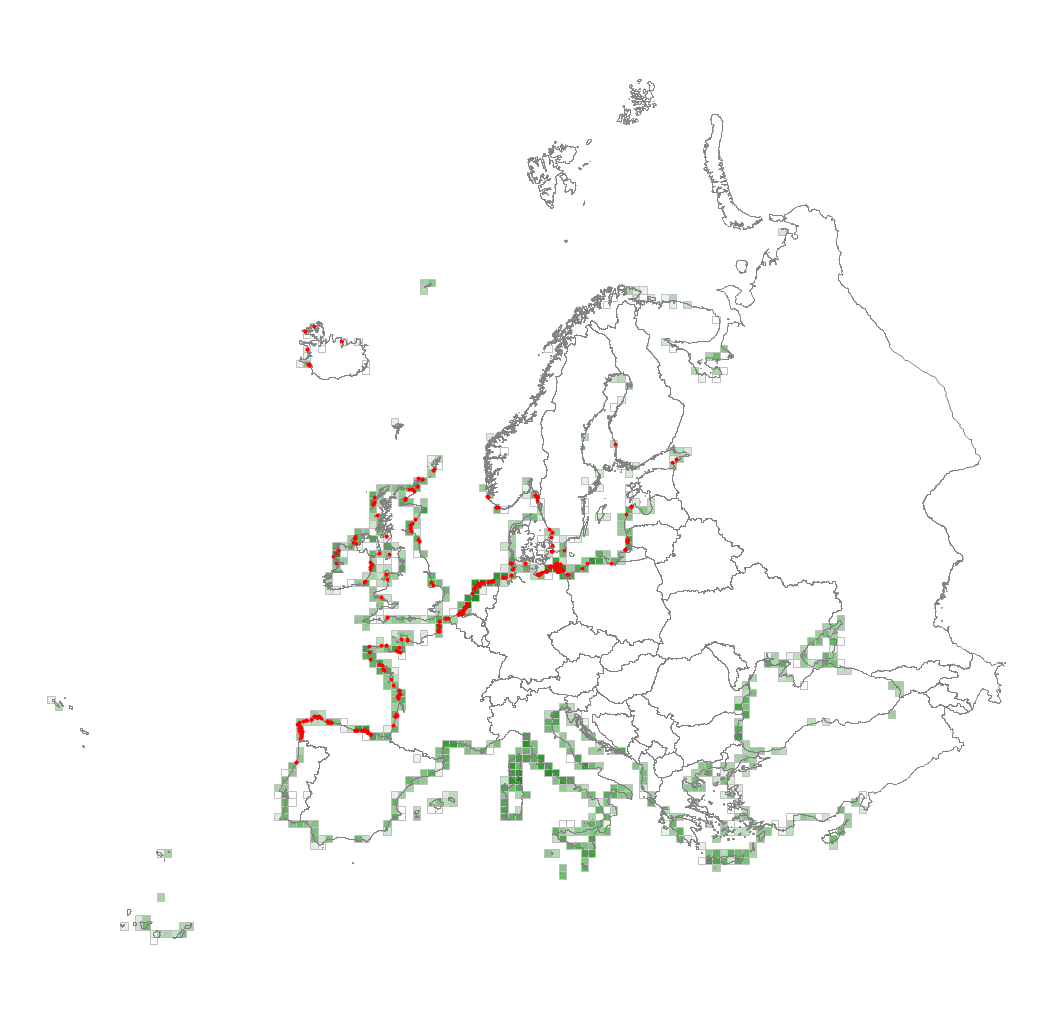N11 Atlantic, Baltic and Arctic sand beach
Atlantic, Baltic and Arctic sandy beach is a linear habitat, occurring on sandy shores of the Atlantic and Arctic Oceans and the North and Baltic Seas. It is mainly an unvegetated habitat with low species diversity. Annual plants, often halophytes are the typical plant species, appearing temporarily on strandline sediments. On less dynamic beaches, as around the Baltic, perennials including some brackish and freshwater marsh plants are characteristic. Volcanic sediments can provide a distinctive character around Icelandic shores. Distinctive invertebrates characterise beaches and their driftlines, providing food for some wading birds.
Chytrý M., Tichý L., Hennekens S.M., Knollová I., Janssen J.A.M., Rodwell J.S. … Schaminée J.H.J. (2020) EUNIS Habitat Classification: expert system, characteristic species combinations and distribution maps of European habitats. Applied Vegetation Science 23: 648–675. https://doi.org/10.1111/avsc.12519
Version 2025-10-03, https://doi.org/10.5281/zenodo.16895007.
For the official presentation of the EUNIS Habitat Classification from the European Environment Agency, please see: EUNIS Terrestrial Habitat Classification 2021. The FloraVeg.EU presentation may show modifications and partial updates to the habitat classification.

1.jpg)
2.jpg)